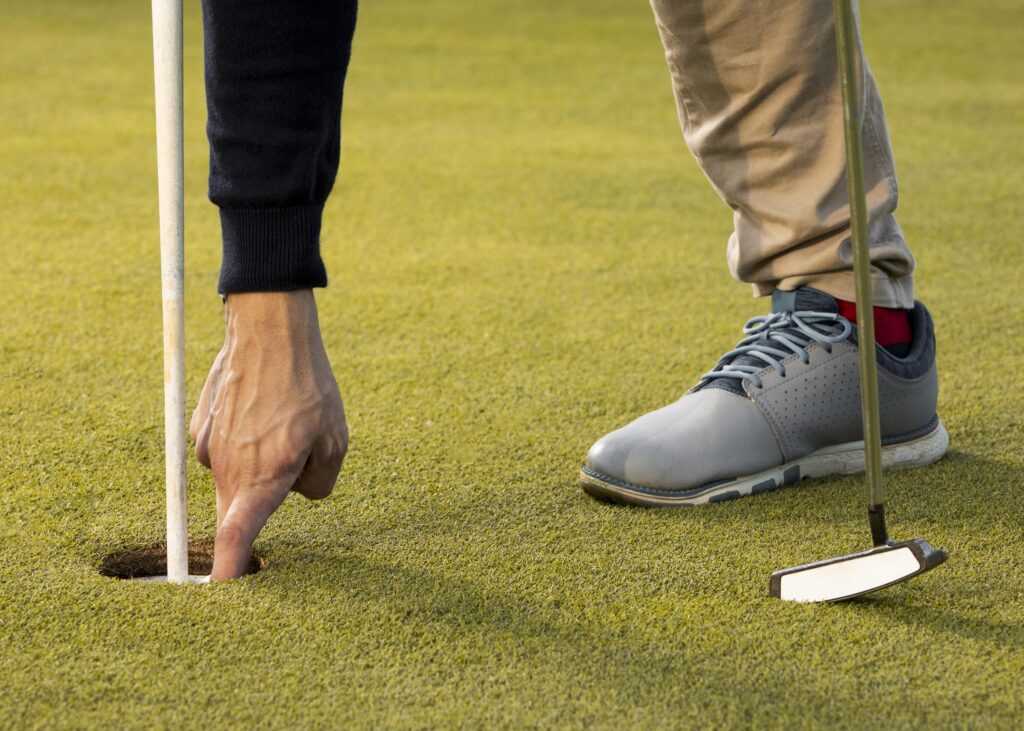Flat Stick Manifesto

When you think of the most intimidating part of a golf course, where does your mind go? Perhaps you think of the ponds, the bunkers, the trees, or the tee boxes. All of those primary fortifications and defenses that seem to prevent us from achieving our goal.
But there is one piece of the puzzle, perhaps one of the most peaceful and least intimidating places on the course where the greatest defense of the hole lies.
The “Fortress”, the “Castle” … The Green
This obsessively manicured piece of golf architecture (including the fringe) makes up for just over 41% of a players score. Yet for many of us, the green is the part of the course we spend the least time actually worrying about. If you are like me, getting to the green feels like a relief more than anything. It feels like the hardest part is behind you, but this is simply not the case. Consider this, on most courses half of par is putting. Which means once you are on the green, half of the game of golf is just starting.
Of course all clubs play a role in getting you to the green, some more than others. But there is only one club that single handedly bears the weight of such an immense chunk of your score; your putter.
Of all clubs, putters carry the most mystique. Drivers, woods, hybrids, irons and wedges all carry with them thoughts of technology, research, fitting, angles, lies, modern composites and space age materials. They conjure up images of researchers in white coats wielding calipers agonizing over the tiniest of details, squeezing out every last drop of performance.
Putters involve technology too, but there seems to be something more to the “Flat Stick” than just money poured into R&D. Putting is an art form, and at times even putter design itself straddles a space somewhere between tool making and sculpture.
One of the most mesmerizing things about putters is that they tread all over the lines where form and function get tangled together. In some cases it seems like the feelings and emotions that a putter evokes make as much of a difference as the technology built into it.
Perhaps that is why there seems to be such a broad spectrum of feelings towards putters. You have probably noticed this yourself on the course. Some players are obsessed with putter technology and spend a fortune on them. Maybe they own a collection of high end putters and are always trying out the latest offerings from manufacturers or boutique craftsmen trying to maximize their putting performance through technology.
On the other end you’ll see players who have the same basic, flat piece of steel they’ve always had and always will have. They feel like putting is solely about skill and has little if anything to do with the putter itself. They feel like changing putters is an absolute waste of time and money which could be better invested in other parts of the bag. But that wide spectrum is exactly what makes putters so interesting. They’re incredibly personal, and there seems to be endless ways to approach the design of putters and the technique of putting itself.
Other golf clubs have a very acute purpose. They are tools designed to achieve a certain distance as efficiently as possible with a specific ball flight.
A putter however, has to contend with an entire “game within a game” all on its own. This is what makes your putter hands down the most important club in the bag.
You can break your driver and it won’t destroy your round (it might even improve it). You can forget your pitching wedge on the last hole and still adjust without too much trouble. But lose your putter mid round, or forget it at home? Well… you know the answer.
The “Flat Stick” is a site dedicated to this deep and interesting “half” of the game of golf. We want to hone in and focus on this “King of Clubs”. A club that it can just as easily be overlooked as it can be venerated.
Still don’t think putters matter?
Let’s sum it up this way…
Great drives get “oohs”.
Great shots get applause.
But great putts, get roars.
Tags: greens, Main, putters, putting, putts